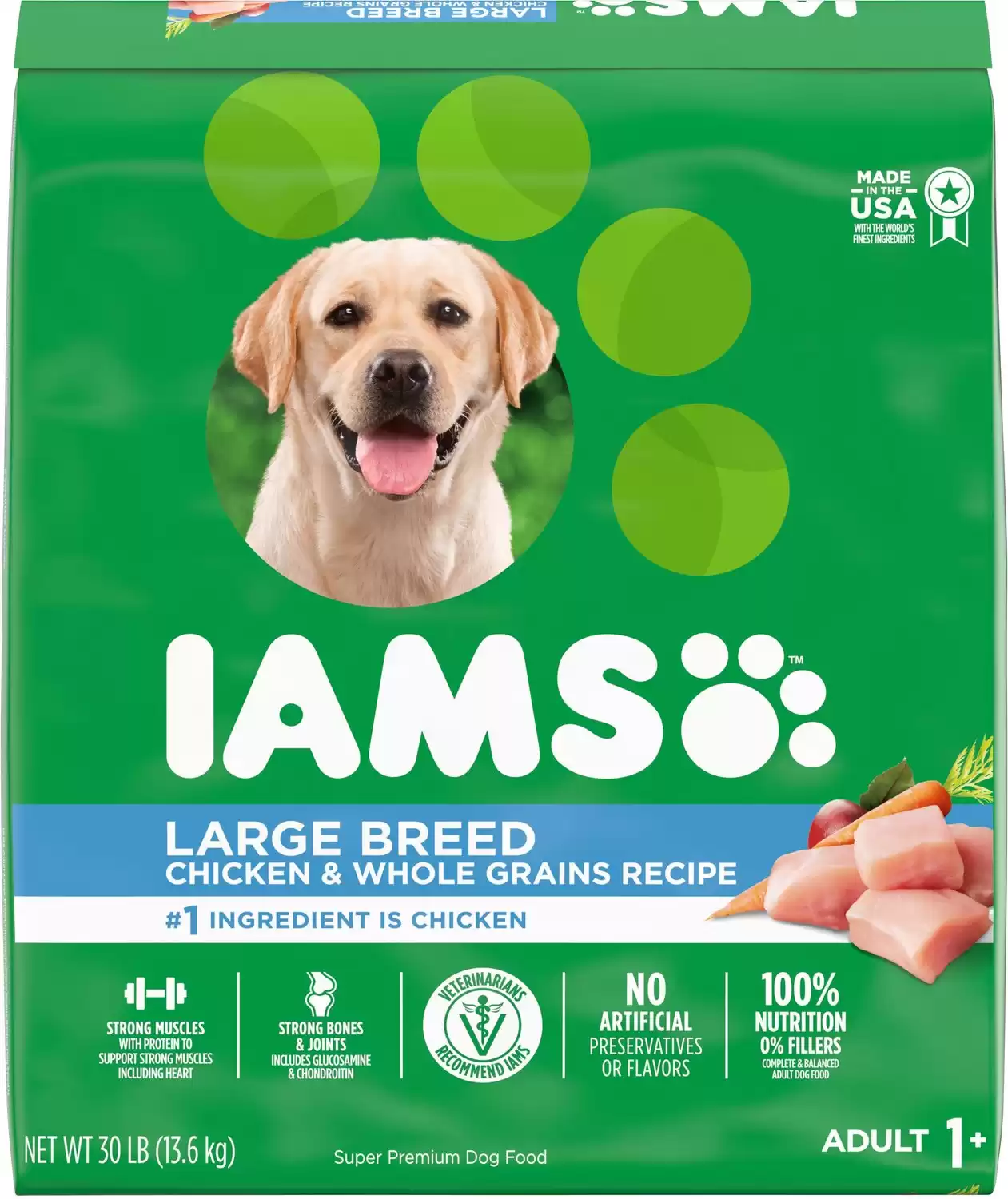Kangal Shepherd Dog
Canis lupus
Can run up to 35 miles per hour (56km).
Advertisement
Kangal Shepherd Dog Facts
- Fun Fact
- Can run up to 35 miles per hour (56km).
- Distinctive Feature
- Dark muzzle and ears
- Other Name(s)
- Anatolian Shepherd
- Temperament
- Loyal, protective, calm
Kangal Shepherd Dog as a Pet:
- General Health
- Energy Level
- Shedability
- Trainability
- Intelligence
- Tendency to Chew
- Size
- Family and kid friendliness
- Yappiness / Barking
- Moderate
- Separation Anxiety
- Low
- Preferred Temperature
- Average climate
- Exercise Needs
- High
- Friendly With Other Dogs
- Moderate
- Pure bred cost to own
- $1200-$2500
- Dog group
- Working
- Male weight
- 110-145 lbs
- Female weight
- 90-120 lbs
This post may contain affiliate links to our partners like Chewy, Amazon, and others. Purchasing through these helps us further the A-Z Animals mission to educate about the world's species.
View all of the Kangal Shepherd Dog images!
Their protective personality and speed make this breed perfect for livestock herd protection.
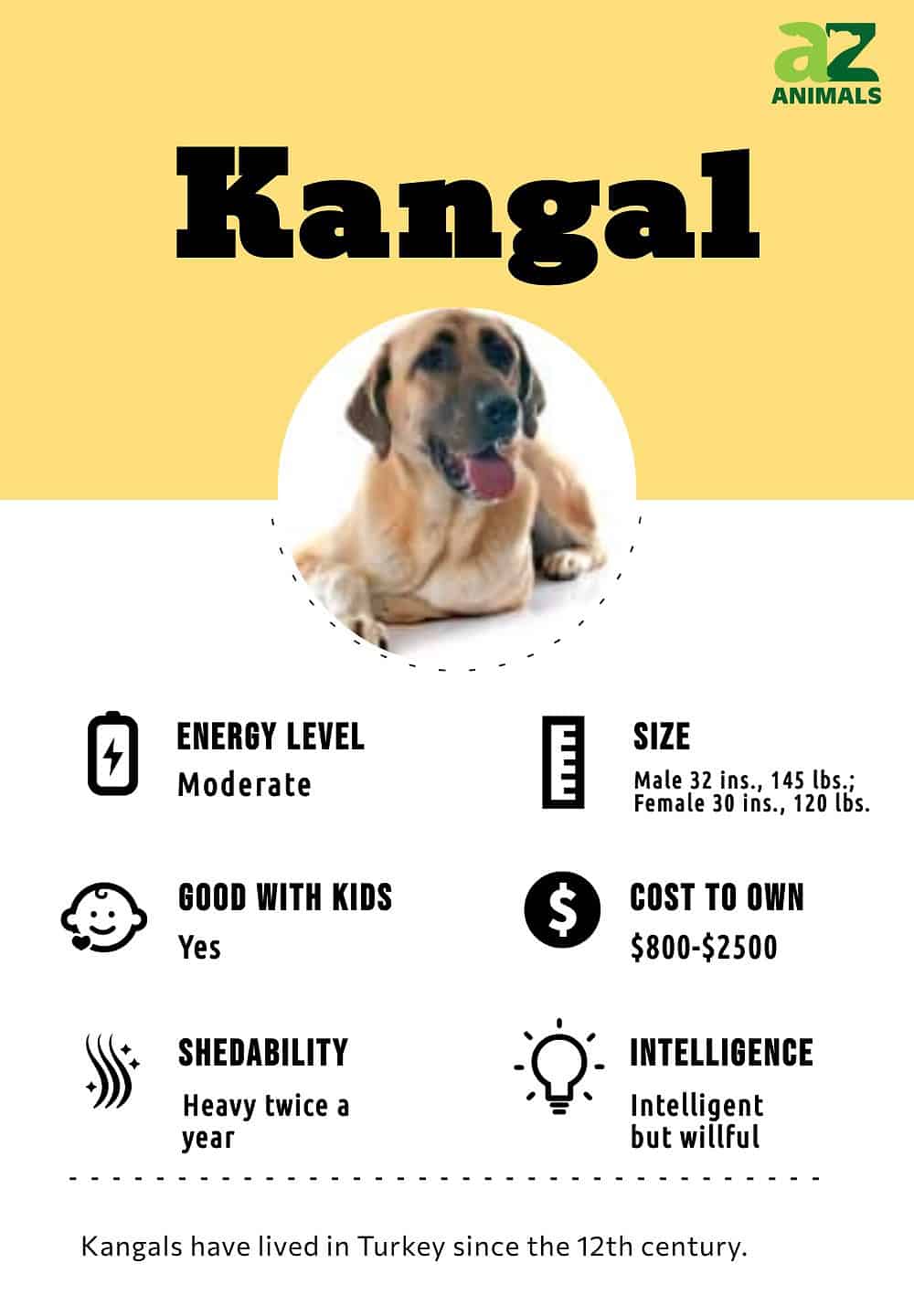
The Kangal is the national dog of Turkey, where the fawn-colored and black-masked breed originated in the district of Kangal in the Sivas province. These canines are bred for protective abilities that make them valuable for livestock managers and security forces. In fact, the dogs can protect herds, properties, and people from humans, jackals, wolves, cheetahs, and lions common to Turkey and Africa where they are highly popular.
See all of our expert product reviews.
Often called “Anatolian lions,” the breed is thousands of years old. Kangal Shepherd Dogs are considered smart, swift, agile, and quick, and it’s also known for having one of the strongest bite forces of all dogs.
The Kangal, also called the Anatolian shepherd, is highly protective and loyal, often being used for security or protective purposes. But owners must take great care in the training of their smart, defensive, and independent Kangal. When properly trained and under the care of an experienced owner, the shepherd is friendly and good with children.
7 Different Types
Some American-bred Kangals are descended from the first two dogs brought to the United States in the late 1960s. The story is that a United States Navy lieutenant who had been stationed in Turkey brought dogs Zorba and Peki home with him. They had their first litter in 1970. Shortly thereafter, a breed club was formed. But since the 1980s, buyers seeking Kangals more often import the breed from Turkey where the dog has lived since the 12th century.
Kangal breeders from multiple nations have long fought each other over who truly has pure-bred lines. Much of this in-fighting comes from Americans breeding the dogs without a clear understanding of the dog’s storied history or regional Turkish shepherd dog varieties.
For example, American dogs called Kangals sometimes have long hair, different coat colors, and color patterns. But Turkish breeders stand by the dog’s thousands of years of history as a short-haired breed with a specific coat appearance. In fact, many American importers have diluted the U.S.-based Kangal bloodline by importing dogs mixed with the Akbash shepherd from a nearby region of Turkey.
Health and Entertainment for your Kangal Shepherd Dog
See all of our expert product reviews.
In America, the Kangal is also called the Anatolian shepherd. But this is a name not used in Turkey. To make things even more confusing, the Anatolian shepherd can be both its own breed or a Kangal, depending upon who is breeding and marketing the puppies.
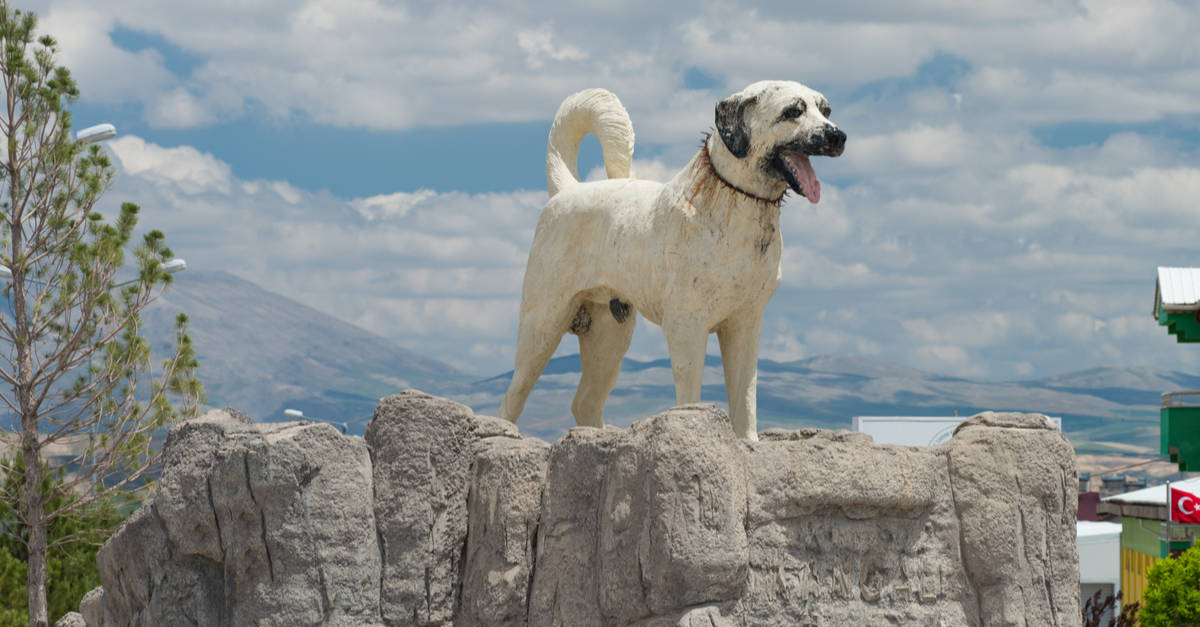
Kangals are often bred with other large dogs in search of the perfect mix of characteristics.
©daphnusia/Shutterstock.com
Many people believe a Kangal is “perfect” in its protective abilities and should not be bred with other types of dogs. But some of the most popular mixes produced with the breed include:
- German Anatolian Shepherd, a Kangal and German shepherd
- Anatolian Pyrenees, a Kangal and Great Pyrenees
- Plush Danios, a Kangal and Great Dane
- Kangal and golden retriever
- Kangal and Siberian husky
- Kangal and Labrador retriever
- Kangal and Australian shepherd
3 Pros and Cons of Ownership
There are some pros and cons to owning a Kangal. These include:
| Pros! | Cons! |
|---|---|
| The Kangal is an excellent personal security dog: Kangals make great personal protective dogs because they are fast, nimble, and smart. They have a very strong bite and threatening bark, ensuring intruders back down easily when confronted by the dog. This makes them great for guarding homes, families, or properties. They also make great police K9s. | Challenging to train: The Kangal is a smart breed with an independent, free-thinking spirit. This makes them challenging to train. It also means they are best suited to experienced dog owners. |
| Child-Friendly: Despite being able to scare away any threat, a well-trained and loved Kangal is very sweet and playful around children and visitors. | Large and heavy: Because these dogs are up to 32 inches tall and 145 pounds at a height of 30 to 32 inches, they take up a lot of space and are not well suited for apartment dwelling or city life. This also means an owner must be equipped to care for such a large dog. They need plenty of space to run around for about two hours per day and have a big appetite. |
| A perfect working breed: The Kangal is a large dog well-suited to farm life, the outdoors, and work. They are not a breed to live happily lying around a kennel. In fact, one of these shepherds is rarely happier than when protecting a herd of cattle or flock of sheep. You can rely on the breed to keep predators of many kinds far away, even big animals like wolves, coyotes, lions, and bears. | Strong bite and highly defensive: The breed is known for having one of the strongest bites among all dog breeds. This makes training and loving care even more important for safety and obedience. When combined with their naturally defensive and protective behavior, such a forceful bite can cause injuries. |
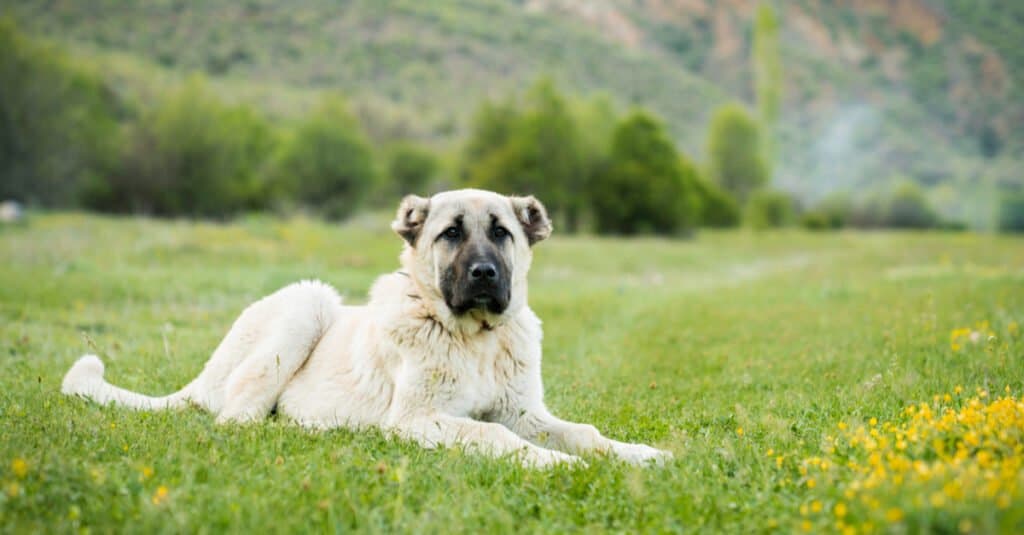
©shodography/Shutterstock.com
Temperament and Behavior
The Kangal’s temperament, personality, and behavior are some of its most distinct characteristics. In fact, these are features that typically lead owners to choose Kangals.
Kangals are loyal, well-adjusted, and even-tempered, yet highly protective. It is their protective personality that makes them great security dogs, K9s, and livestock protection dogs. When raised in a domestic setting and properly trained, an Anatolian has extremely patient behavior around kids. However, if the dog detects the owner’s personality as submissive or weak, the Kangal assumes the position of pack leader or the “alpha.” This leads to difficulties in managing the dog’s behavior because of their free-thinking intelligence. For the dogs to readily accept visitors and being around strangers, it is important to socialize them around people and other animals from a young age.
Guardian of the Flock
The Kangal is known as the “guardian of the flock” because it proves highly effective in protecting flocks of sheep, goat flocks, and cattle herds from wild predators. Kangals can fight and win against some of the world’s deadliest animals such as African lions, cheetahs, wolves, buffalo, and coyotes. They have an innate loyalty, bravery, and protective streak rare among dogs.
Size and Weight
The Kangal is a large dog distantly related to the Mastiff. Males typically measure up to 32 inches tall and females grow up to 30 inches. When fully grown, males weigh up to 145lbs and females weigh up to 120lbs.
| Height (Male): | 32″ Tall |
| Height (Female): | 30″ Tall |
| Weight (male): | 145lbs, fully grown |
| Weight (female): | 120lbs, fully grown |
Common Health Issues

Kangals are among the healthiest breed of dogs.
©Halit Omer/Shutterstock.com
The Kangal is not known to have many health issues. In fact, they are considered among the healthiest breeds of dogs and live about 15 years. But some of the most common concerns they face are entropion, hip dysplasia, and lipoma.
Entropion is an eyelid deformity causing the eyelid to turn inward. This enables the hairs of the face to rub against the eye, leading to discomfort and inflammation. Two of the most common signs of this condition are excessive eye tearing and squinting. Surgery can correct the problem.
Hip dysplasia is common in large breed dogs like the German shepherd. This condition causes abnormal growth of the hip joints, starting in puppyhood. As the dog grows and ages the condition worsens, eventually leading to lameness. Anti-inflammatory medications and surgery are two options for correcting hip dysplasia.
Lipoma is a condition involving the growth of fatty lumps on the chest and abdomen, just under the skin. Although most of these lumps are painless and benign, they can grow quite large. A veterinarian can remove lipomas if necessary.
As a summary, the most common health issues a Kangal faces include:
- Entropion
- Hip dysplasia
- Lipoma
Care
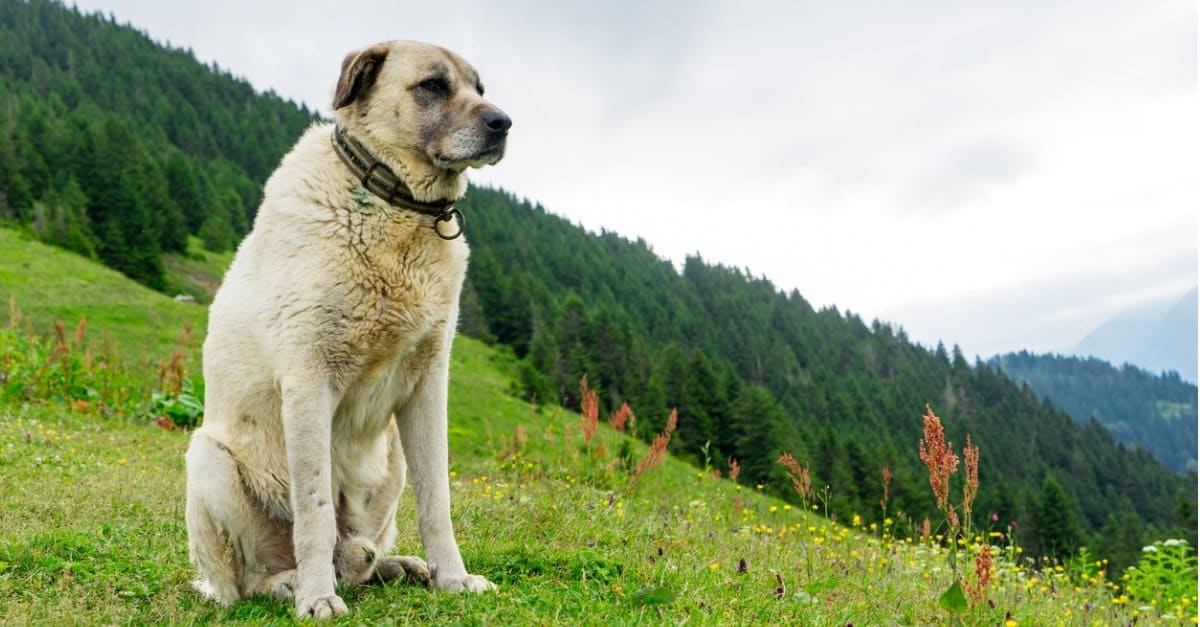
Caring for a Kangal, like any dog, means taking into consideration its nutritiion, exercise, and grooming needs.
©klenger/Shutterstock.com
Kangals are large breed dogs with a range of considerations and factors for owners, from puppy age to adulthood. They make great pets but have many needs specific to the breed. These unique factors include their large size and weight, appetite, exercise requirements, and tendency toward having hip dysplasia. They also are free-thinkers needing proper training.
Best Dog Food
U.S.-born Kangal dogs frequently start their lives as puppies on an Americanized diet of their mother’s milk, followed by puppy kibble during weaning and thereafter. Adult dogs are also generally fed kibble formulated specifically for growing and mature pets. But in Turkey where many of these dogs originate, they eat a very different diet.
In Turkey, a Kangal eats yal. Yal is a barley flour and hot water mix made into dough. This mix sometimes includes yogurt or other nutritional supplements. They are also fed 25 grams of meat each day. Three times weekly, Kangals in their native land are provided with boiled bones to help their oral structures properly develop.
Fortunately, Kangal owners don’t have to worry too much about addressing health problems through diet. So you may want to go for a large breed dog food with similar ingredients to Kangal’s traditional diet.
Iams Large Breed Adult Dry Dog Food, Chicken & Lamb is a good choice for Kangals, because it’s made for large breeds.
This food uses high-quality animal protein and other ingredients with fiber and prebiotics. It has lots of minerals and vitamins such as A, D, and various B vitamins to make sure your large Kangal dog gets enough nutrition. Plus, one of the main ingredients is barley, which is what Kangals eat in Turkey.
Kangal owners can buy Iams Large Breed Adult Dry Dog Food on amazon.
- Chicken and whole grains recipe for large dog breeds
- Provides bone and joint health for active dogs
- Contains fibers and prebiotics for healthy digestion and immunity
- Promotes strong muscles with quality protein sourced from real chicken
Owners of Kangals can choose to feed their dogs traditional diets or those bought off the shelf in grocery stores. But the best diet for a puppy and adult of this breed includes food high in calcium along with a good balance of carbohydrates with proteins and fats.
Maintenance and Grooming
True Kangals have short hair. This makes grooming easier for owners than for large breeds with longer coats. It is important to brush the dog’s coat at least once a week. Bathing two to four times per year is good enough to keep their coat healthy. But these dogs can get quite dirty and may require more frequent bathing if they live indoors. When grooming a Kangal, it is important to check their eyes for signs of eyelid inversion or related inflammation.
Training

A Kangal can be willful, so proper training is essential and should be started when the dog is still a puppy.
©iStock.com/BiancaGrueneberg
This breed is known for its intelligent yet free-thinking nature. It can assume the alpha dog position in a household easily if the owner does not act as the alpha. This can lead to willful behavior with the dog taking over the household.
Because of this tendency toward willfulness and the breed’s natural defensiveness, it is critical that owners seek to properly train their dogs. This training and socialization should start in the puppy weeks and continue into adulthood.
The breed is smart, so they learn well. But owners or other trainers have to perform as the leader of the pack without submissive behavior in the eyes of the dog.
Exercise
Kangals are large dogs. This makes taking them outdoors and letting them stretch their legs very important, particularly since the breed has a tendency toward hip dysplasia. Owners need to exercise their pets for two hours each day, allowing them room to break into full stride and play at top speed. Playing fetch is a great activity. The breed also makes great companions for runners or hikers.
Puppies
In the puppy stage, it is important to start the dog’s obedience training. Doing so early will help owners avoid any undesirable behaviors like chewing, general misbehaving, or aggression. Because the breed tends toward free-thinking, free-wheeling behavior, early training can curb this streak. It is also important to have the dog around other pets, neighborhood dogs, and people from a young age toward healthy socialization.
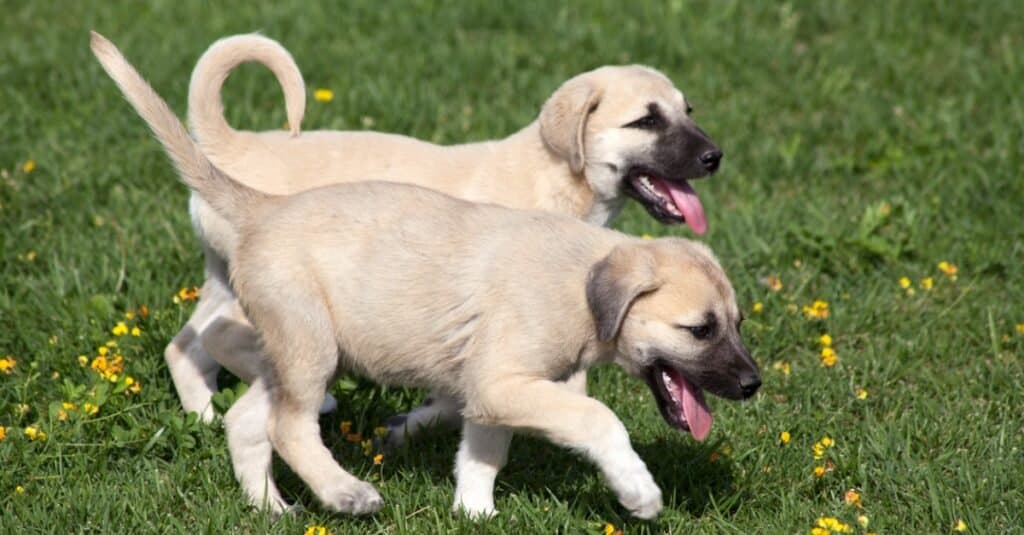
©ehasdemir/Shutterstock.com
Children
Kangals make loving companions and patient playmates for children when they are raised around kids or socialized from a young age. With obedience training, this breed can play with children for hours while remaining loyal and protective over kids’ safety.
Similar Dogs
Dogs similar to Kangals include German shepherds, Mastiffs, and Akbash.
- German shepherds are highly protective and intelligent large dogs much like the Kangal. The German shepherd features a “black mask” on the face like a Kengal and also shares some health issues with the Kangal like hip dysplasia. Both of these breeds are also frequently used as security dogs and K9s.
- Mastiffs are a large breed from which the Kangal is a descendant. These dogs share large size, the “black mask” color markings on fawn or sable short hair and loyalty. But the Mastiff is more easily affectionate and family-oriented.
- Akbash shepherd dogs come from a region very close to the Kangal’s region in Turkey. The two dogs share many traits and behavioral attributes, such as size, loyalty and defensive nature. While breeders in that country work to keep the two breeds’ bloodlines pure, some people from the area in between these two regions cross-breed Akbash with Kangals, then selling the dogs as pure Kangals or pure Akbash. This causes many conflicts in the province from which they all come.
Popular Names for Kangals
Popular names for Kangals include:
- Charlie
- Toby
- Jack
- Bear
- Buddy
- Duke
- Bella
- Piper
- Lilly
- Molly
- Lulu
- Zoey
Kangal Shepherd Dog FAQs (Frequently Asked Questions)
How much does a Kangal cost to own?
Kangals are typically born in litters of five to 10 puppies. How many puppies are born in a region or to an individual breeder can affect their price, but they typically cost about $1200 to $2500 each from a professional kennel. They can fetch as much as a price of $4000.
Puppies of this breed typically cost between $1200 and $2500 each. But their price can be as much as $4000 per puppy from a reputable kennel.
Is a Kangal good with kids?
Kangals are good family dogs that show patience, loyalty, and love for the children in their families. They are good with children when provided with proper training and behavioral guidance from a young age. This guidance should include socialization with animals and people of all ages.
How long does a Kangal live?
The life span of an Anatolian shepherd Kangal dog is about 12 to 15 years. They do not tend to suffer breed-specific health problems beyond hip dysplasia, lipomas, and entropion. Their actual life span comes down to diet, exercise, and general health.
What is a Kangal dog?
A Kangal, also called an Anatolian shepherd, is a Turkish breed that dates back to about 1200 AD. The dogs are related to the Mastiff and are considered a Mastiff breed. They are widely known for their protective behaviors, strong bite force, and excellence in protecting herds from predators.
Are Kangal dogs legal in the US?
They are legal for ownership unless otherwise dictated by community or neighborhood mandates. Some communities enforce “large breed” dog ownership rules. This makes it important to do research before buying a Kangal puppy.
Is the Kangal the strongest dog?
They are not the strongest breeds but do prove highly protective. Their bite force is among the strongest of all dog breeds. This makes them formidable opponents against big animals like bears, lions, and wolves.
Is a Kangal a good family dog?
They are good family pets when provided with proper training and socialization. Although they have highly protective tendencies, these behaviors can be curbed through obedience training. They are patient, loving, and loyal to their family owners.
What's the difference between a Kangal and an Anatolian shepherd?
Anatolian shepherds differ from Kangals in coloring as well as size. However, many people consider them the same breed of dog.
What's the difference between a Kangal and a Cane Corso?
The Kangal is larger than the Cane Corso, and the Cane Corso has a slightly shorter lifespan than the Kangal. Additionally, the Kangal was originally bred in Turkey, while the Cane Corso originated in Italy.
Who would win in a fight: a Kangal or a Lion?
A lion would win in a fight against a Kangal. However, the Kangal likely shows more skill than a lion using agility and speed. The lion is simply larger and stronger overall- a Kangal is unlikely to survive any serious fight.
What are the differences between German Shepherds and Kangals?
The major difference between German Shepherds and Kangal Shepherds is size. Other key differences include appearance, lifespan, and barking level.
Thank you for reading! Have some feedback for us? Contact the AZ Animals editorial team.
Sources
- Wikipedia / Accessed September 24, 2021
- Kangal Dog Club of America / Accessed September 24, 2021
- All Things Dogs / Accessed September 24, 2021
- Dog Breed Info / Accessed September 24, 2021
- K9 Web / Accessed September 24, 2021
- Daily Paws / Accessed September 24, 2021
- Northwest Arkansas Gazette / Accessed September 24, 2021
- Dog Breeds List / Accessed September 24, 2021
- Dog Scanner / Accessed September 24, 2021
- The Kennel Club / Accessed September 24, 2021
- World Dog Finder / Accessed September 24, 2021
- The Happy Puppy Site / Accessed September 24, 2021
- Pet Net ID / Accessed September 24, 2021






